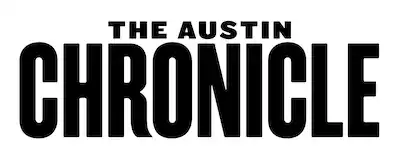https://www.austinchronicle.com/arts/2012-01-13/return-of-the-herd-of-harpsichords/
Exhibitionism
Reviewed by Robert Faires, January 13, 2012, Arts
Return of the Herd of Harpsichords
First Presbyterian Church, 8001 MesaJan. 8
For all of us, there was a time when the only distinction we could make between wines was that one was red and the other white. But if you had the good fortune to go someplace where wine was understood and appreciated, you could learn about different varietals and the regions where they're made and how soil and climate and aging and such can affect a wine's taste. And after enough exposure, you might have found yourself able to distinguish between a Merlot and a Pinot Noir, a French wine and a Californian. That's rather how it felt at La Follia's latest concert, a follow-up to the baroque music ensemble's hugely successful Bach's Herd of Harpsichords concert a year ago. You could have stepped inside the First Presbyterian sanctuary thinking of the harpsichord as little more than that kind of goofy, old-timey keyboard sound on the Beatles' "Fixing a Hole" or the theme to The Addams Family, and by the time you left, you'd have been able to tell the difference – maybe even hear the difference – between French, Flemish, and Franco-Flemish harpsichords.
Much of the heavy lifting on the educational end was handled by KMFA Music Director Sara Hessel, who spent the half hour before the concert briskly taking us through the instrument's geneaology, history, and regional distinctions, with illuminating sound clips and a few wry asides. (Who knew that the competition among 18th century European harpsichord manufacturers was as cutthroat as any you'd find in a David Mamet play?) But the performances offered plenty of their own revelations about the harpsichord, especially regarding its range of colors and emotions. In our day, the keyboard's distinctive sound is largely employed as pop shorthand for a dated, Old World sensibility. But in the opening Triple Concerto in A Minor, it became a source of animation and vitality, racing up and down scales and running rings around the sedate strings, whose long notes and fluid passages between notes suggested mature, staid adults trying to slow down a high-spirited young charge. And the harpsichord would have none of it. La Follia Director Keith Womer infused the keyboard with a puckish energy, its rapid runs like those of an irrepressibly frisky kid for whom life is movement and who's gotta dance. The next piece, the Concerto for Two Harpsichords in C Minor, took the instrument to the opposite extreme of feeling; in the somber "Adagio" over the gentle plucking of strings by the six string players behind them, the two harpsichords danced a waltz of world-weariness. If ever musical instruments drowned in the depths of ennui, they were these, the weltschmerz conveyed with doleful elegance by Womer and JiMin Kim. The instruments' vigor returned in Concerto for Three Harpsichords in D Minor, with Jeffrey Jones-Ragona joining Kim and Womer in a show of unity and purpose among the three instruments, which in the first and third movements sounded as if they might be collectively leading a march across some broad expanse. Their trek was flecked with passages of marvelous tension – the strings' sharply escalating chords ratcheting up the suspense – but the harpsichords repeatedly revealed their resilience through silvery flourishes and spectacular runs of notes that, unlike those in the Triple Concerto, seemed to exist not for their own sake but to communicate vitality and determination – a sense of forcefulness I daresay few contemporary listeners outside the early music community would associate with the harpsichord.
J.S. Bach, though, understood everything the instrument was capable of, and by focusing this concert on Bach's compositions for the instrument, Womer smartly lets us hear both the harpsichord's versatility and Bach's genius in exploring the limits of music through the voice of a single instrument. Nowhere was our sense of that greater than in Fourteen Canons on the Goldberg Ground, played by the three harpsichordists after intermission. These brief exercises begin so basically: a simple run of notes repeated, with a second version laid over it at a different point – think of a round, like "Frère Jacques." But off of these, Bach builds increasingly elaborate variations, layered in complexity like dense mathematical equations. And in the reedy, refined voice of the harpsichord, they seemed like ice crystals growing. When the piece ended, I knew more about the harpsichord than when it began. And as with all the pieces in the concert, mostly what I knew was that I wanted to hear more.
Copyright © 2025 Austin Chronicle Corporation. All rights reserved.
